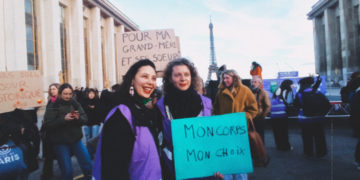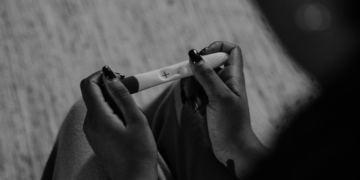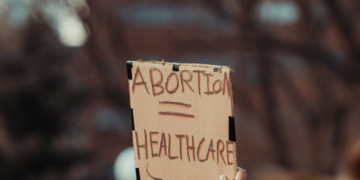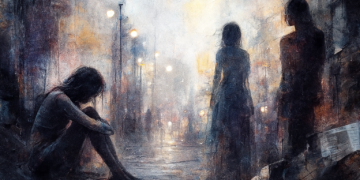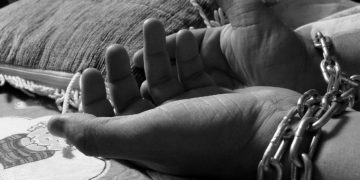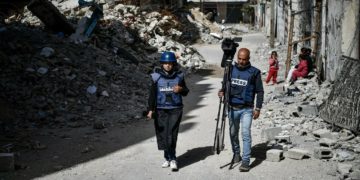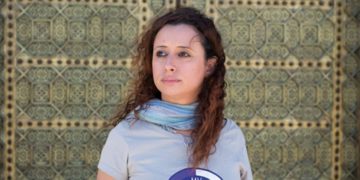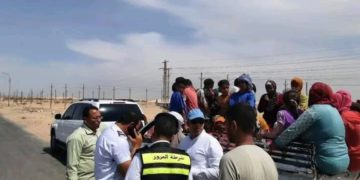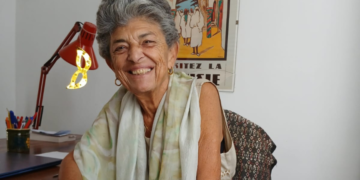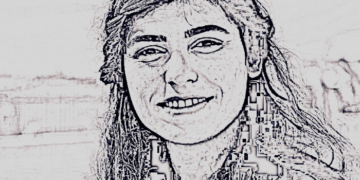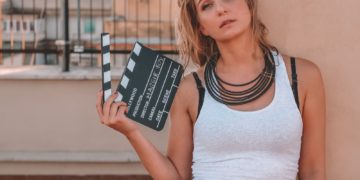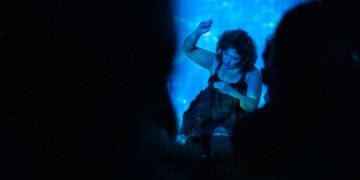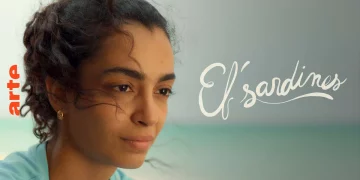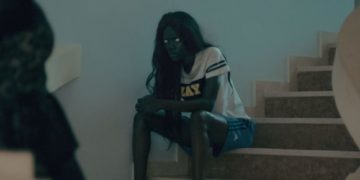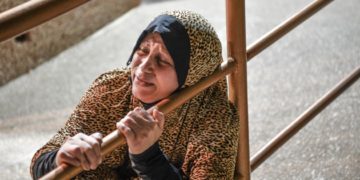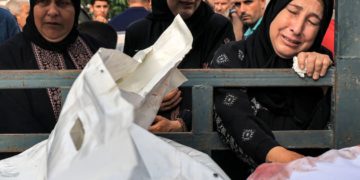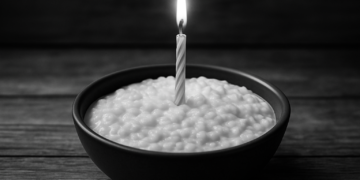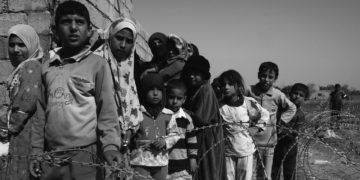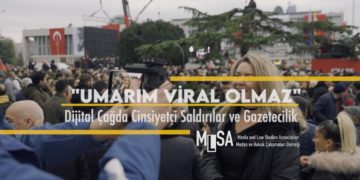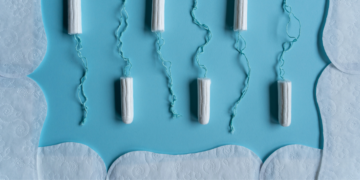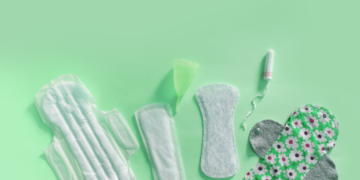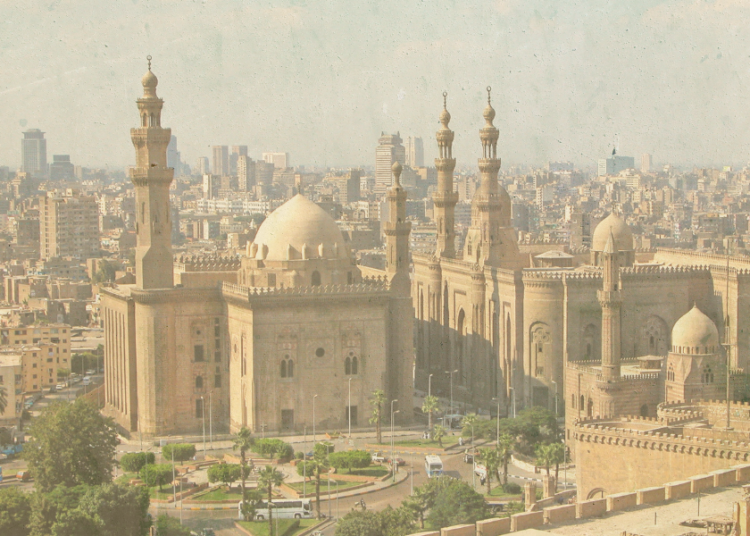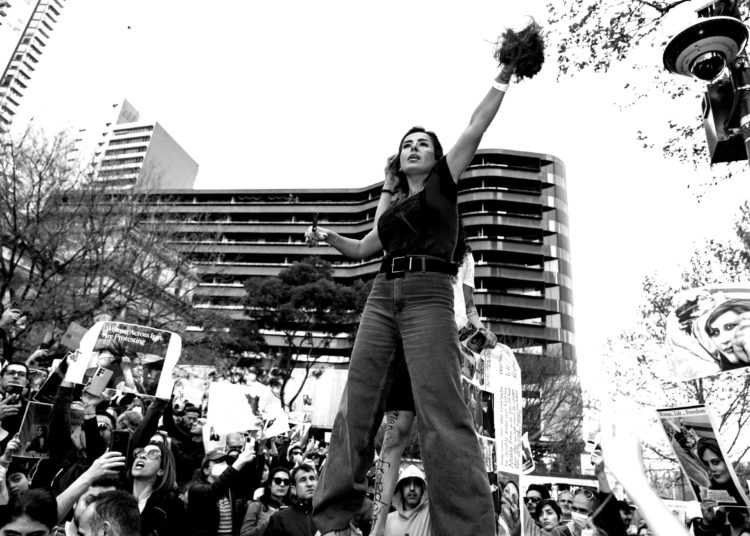This post is also available in: Français (French) العربية (Arabic)
Hedia Baraket
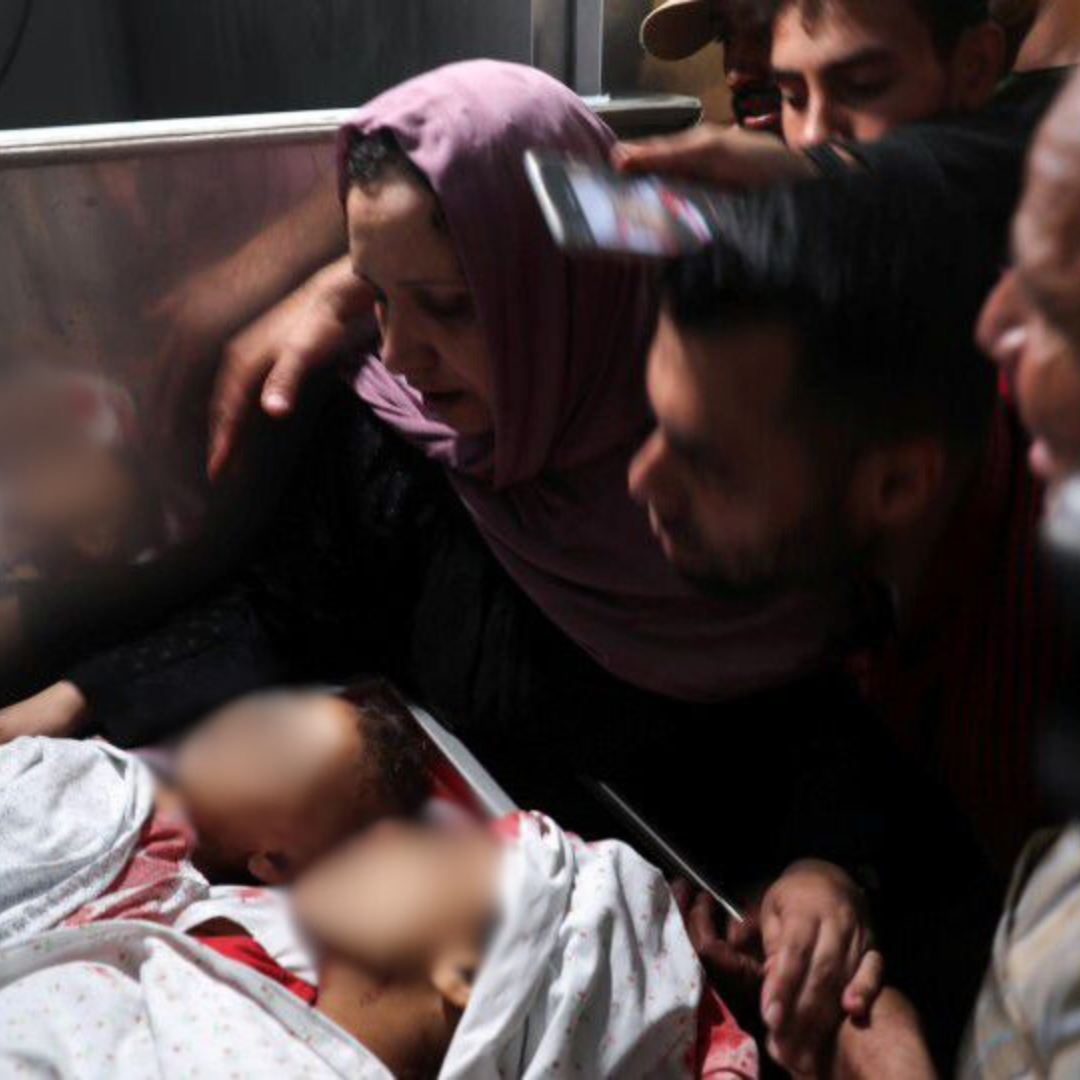








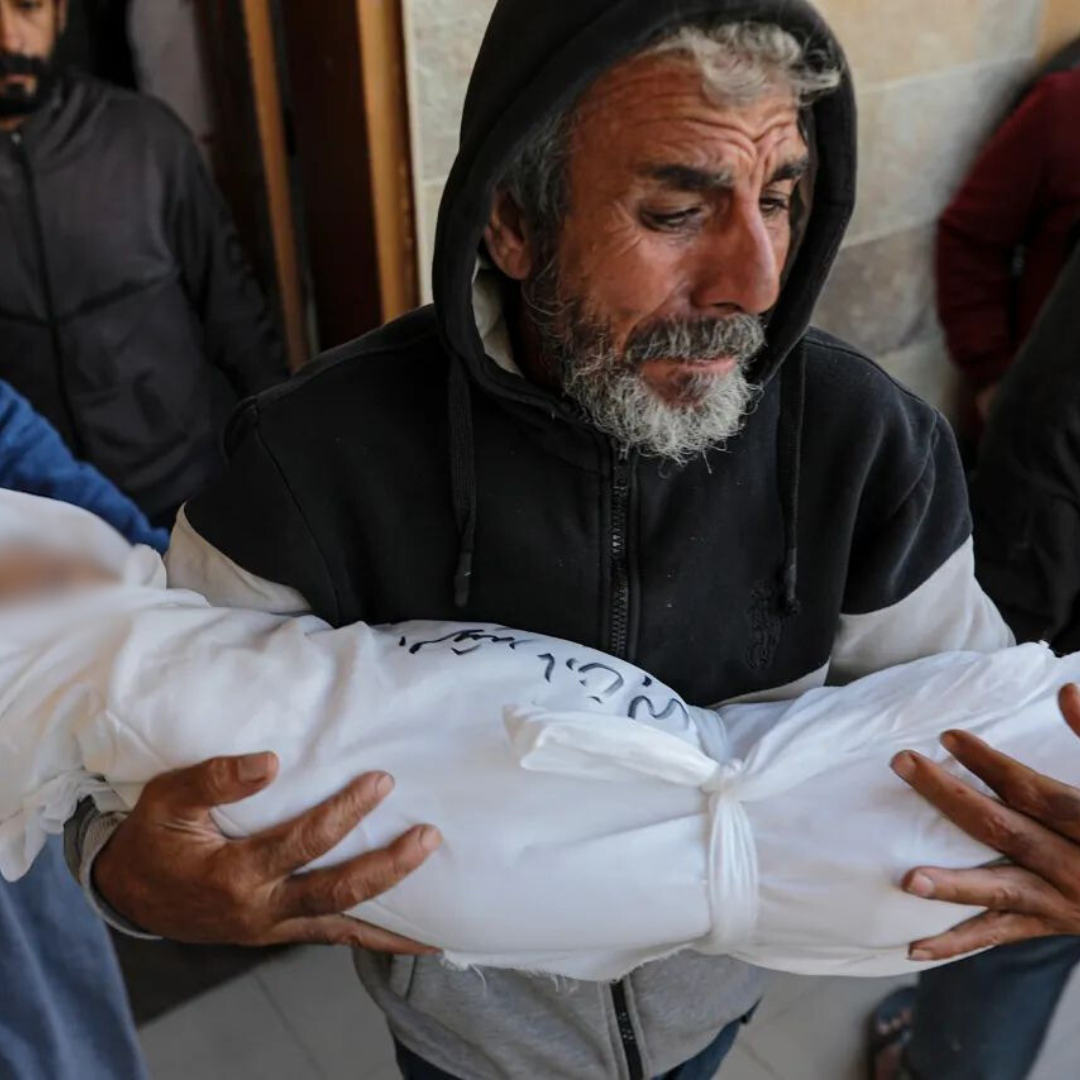




Image Zero: A Masterpiece November 2023
The start of the Israeli ground operation in Gaza. A hospital bench. A young woman, moon-faced, mother of four, sitting either on her lap or next to her. A thick layer of dust covers them from head to toe in the same white sheet. On the mother's temple, a trickle of sticky blood meanders as far as it can along a path of dust until it coagulates at the bottom of her cheek. No screams, no tears. Just surprise in the children's eyes and a mysterious emptiness in the mother's... Accompanied by a song that says 'Salam ya Gazza', 'Hi Gaza' or 'Peace on Gaza', the video has a pain, a gentleness, a tenderness, an aestheticism, a poeticism and a romanticism that we won't see much of again. As the camera approaches, the woman stares into the photographer's eyes, without changing her expression, without saying anything, except to show him her children, one by one, with slow, loving gestures. Always in silence.
This masterpiece does not bear a signature, but comes from the first wounds of Gaza. Gaza the woman, the love, the peace, the family, the patience, the resistance to the blockade, the resilience, the dignity, the disbelief and above all the hope that this is just a nightmare... But it is not a nightmare. It's all real. It all happened so fast, so hard. To the rhythm of the unleashed attacks, the indiscriminate targeting, the massacres of civilians, the number of dead children. At the same pace, a visceral, instinctive, intimate film of the horror began to emerge, with no scriptwriter, no director, no actors other than the Gazans themselves, no cameramen other than local journalists and bloggers, just the ordinary mass of Smartphone users.
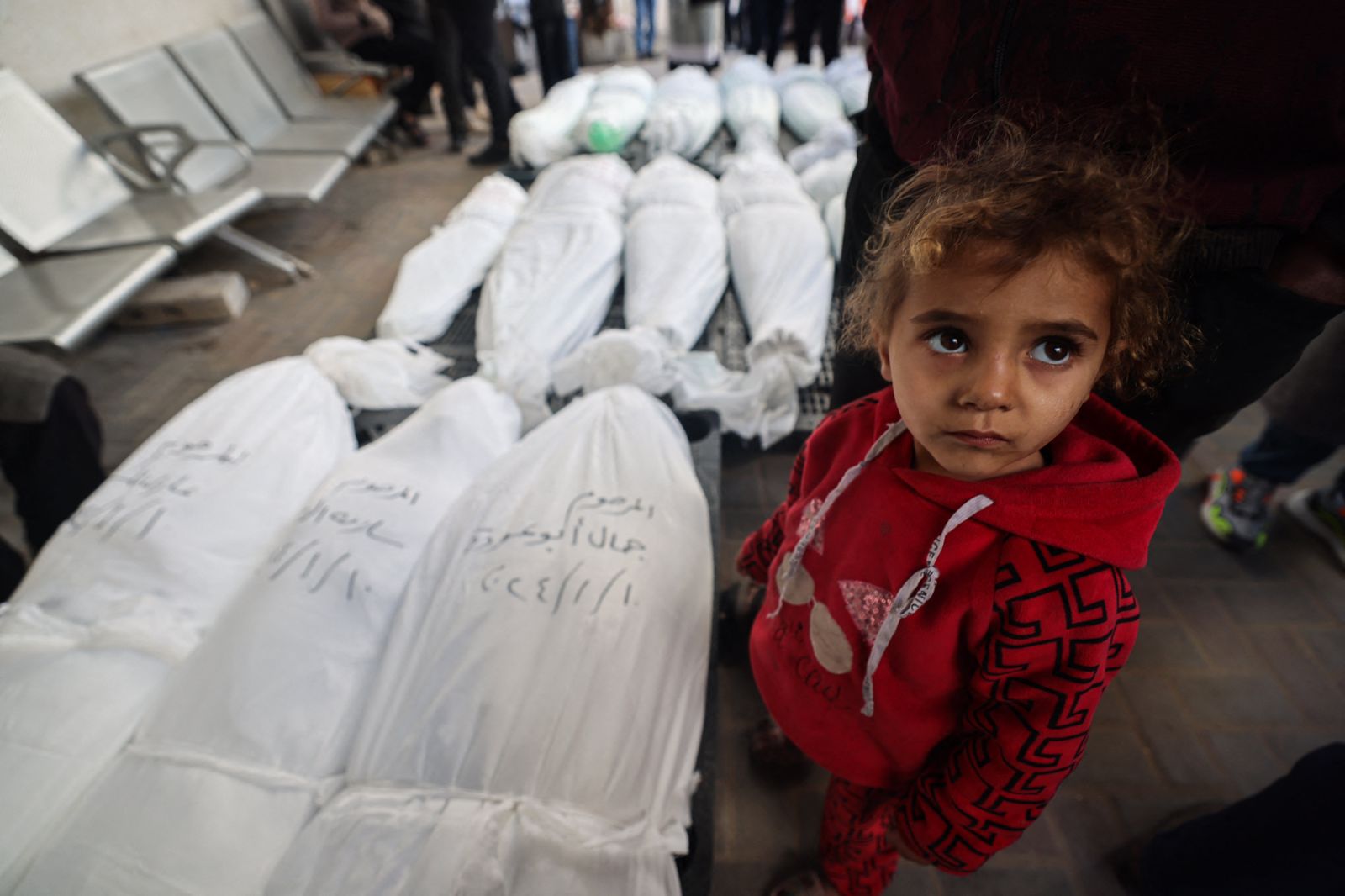
As a result, images immediately flooded the web, sending a shockwave through the networks. The images come as suddenly as the rockets, as suddenly as the collapsing buildings, as suddenly as the fire, as suddenly as the ambulances, as suddenly as the stretcher-bearers, as suddenly as the blood stains that spread across the sheets of the wounded. But why so many images? A question we don't even have time to ask when faced with two or three facts: the effect of surprise, the speed of the attacks and the nature and scale of the atrocities. With a little hindsight, here are some answers:
They offer the corpses of their children as trophies for the camera
A young man runs, breathless. The blanket in his arms drags on the ground, barely concealing the body of a child whose arms and legs are exposed. A reddish stain on the sky-blue fabric shows the wound is in the upper body: the chest, neck, or perhaps part of the head. In his frantic dash, the young father stops, gasping: “Sawwer! Sawwer! Khalli el 3alam ychouf ahdaf Netanyahu!” (“Film! Film! Let the world see Netanyahu’s targets!”) Once the filming ends, he runs back toward the ambulance blocked at the other end of the street. Whether the child is alive remains unknown.

And then there are the others—tens of thousands of women and men—lifting their disfigured children like trophies, limp as decapitated dolls, shouting: “Film! Film! These are Netanyahu’s strategic targets!” Thousands of images and videos echo the same powerful plea. Mothers, fathers, doctors, first responders, relatives and neighbours—all, in their desperation and race against death, present the bodies of loved ones to the cameras.
Reverence for the living and the dead is momentarily set aside. In a grim pragmatism born of necessity, they pull back the covers, exposing amputations, torn flesh, shattered bodies. They plead for one thing: “Film us.” No journalist or passerby with a a simple smartphone can ignore such a plea—an SOS that demands attention. They hardly blur the unbearable. They cling, tenuously, to a revised sense of professional ethics shaped by the brutal reality of Gaza.
Not long ago, photographing children in such circumstances was considered a breach of ethics. But Gaza has rewritten the rules, creating a form of citizen journalism—raw, unfiltered, and driven by a profound belief in the power of information. It may be the first war zone in history to open itself so freely to global scrutiny, without guided tours or security cordons. Here, the atrocities are neither censored nor curated. Only the most grotesque images—decapitated heads, exposed entrails—are blurred.
While no one knows the fate of Gaza’s ceasefire, the fire and blood of the fifteen months preceding it remain vivid in memory.
Confidently, we expose ourselves to friendly cameras
The journalists, bloggers, and citizens documenting every moment are all Gazans—locals who have instinctively stepped into the void left by Israel’s border closures and its ban on foreign war correspondents. They know the terrain, the customs, the temperaments, the habits, the geography, and the history, making them approachable and deeply connected to the stories they tell. The witnesses, in turn, trust them in ways no foreign journalist ever could. This trust fosters an intimacy, an authenticity, and even a raw brutality in the footage—unedited, unstaged, and deeply truthful. In Gaza, a new form of journalism has emerged: citizen journalism at its purest. A live, unfiltered history that freely channels emotion.
"We are not numbers. Tell our story. Those who survive will tell. Share, share, share!" These slogans, penned by intellectuals, poets, and teachers, set the tone. Revered even more after their authors’ deaths, these instructions have become sacred. Internet users take up the call, flooding the web with hash tags and slogans: "We will not forget," and "We will not be free until Palestine is free." The history of Palestine is written in massacres, genocide, land theft, forced displacement, and tears. From 1917 to 2023, few images have captured this. Forgetting has been the norm; resilience, the key to survival. But Gaza in 2023/24/25 stands apart: the scale of the massacres, the intensity of the weaponry, the longevity of the war, and the genocidal attacks compel the filling of an image void, the fighting of denial, the destruction of lies.
The massacres cease, but the images endure. The guns go silent, and the witnesses begin to speak.
There is no single emblematic image of Gaza
History is marked by bloody revolutions, wars, war crimes, massacres of minorities, genocide, and ethnic cleansing. Few have witnessed the iconographic density, immediacy, power, and virality of Gaza’s images.
On 8 June 1972, Kim, a nine-year-old Vietnamese girl burned by napalm, ran naked down the street, her back aflame. Captured on the spot by a young Associated Press photographer, the image shifted American opinion at the height of the Vietnam War.
On 5 June 1989, an anonymous man, later known as Tank Man, stood unarmed in Tiananmen Square, halting a column of Chinese army tanks. Taken by an American photographer, the image became a global symbol of resistance to oppression. Many other black-and-white or sepia photographs still resonate, embodying an era when wars and revolutions could be encapsulated in a single image, front-page news later immortalized in history books.
Gaza, however, defies this tradition. It offers not one image but a flood—dense, immediate, and viral—unlike anything history has seen.
But if you had to remember just one image of the Gaza genocide today, what would it be?
The bloodiest? The most unbearable? Where would you look? Among the most viral? In which 'ordinary' category should we search? Children? Women? Men? Ordinary heroes? Or the extraordinary heroes catalogued and eliminated by the Lavender artificial intelligence system to strip Gaza of its worth? On the side of hope? Resilience? Absolute tragedy? Atrocity? Shame? Barefoot resistance fighters? The obscene laughter of Israeli soldiers blowing up houses and killing children? Mass graves? People buried alive? People burned alive? Hungry crowds waving empty pots? Thirsty queues waiting for their right to a yellow tin? People slaughtered for a kilo of flour, their blood spilled before they could eat it? Hospital floors littered with the gravely injured as doctors triage to save a few? Journalists throwing helmets and vests into the flames, their gear useless against deliberate liquidation in a genocide behind closed doors? Houses and tents flattened under bombs designed to destroy mountains. Wheat fields and olive groves scorched by white phosphorus to ensure barrenness. Poisoned water wells. Burned ambulances. Destroyed hospitals. Miles of razed towns and neighbourhoods. Hostages stripped, chained, and taken to torture camps. Displaced families bombed on escape routes as they flee with children, mattresses, and blankets. Refugees sheltering in schools only to be slaughtered in “quantifiable” attacks. Entire families annihilated in their sleep. Wounded left to die, denied care, then denied burial and funeral and abandoned to be claimed by stray cats and dogs. Children trembling uncontrollably from unknown syndromes. Babies dying without a mark, their breath stolen by an odorless, colorless gas that “gently” suffocates.
Protests at the world’s edge, carrying dolls wrapped in white, blood-stained shrouds through rain and snow. Tears from strangers in distant cities who had never heard of a strip called Gaza. Flash mobs and choreographed street performances expressing barbarity in its starkest form. Artistic outcries, paintings, cartoons, concerts by renowned artists, conferences by free thinkers exposing the historical falsehoods of a nation called Israel.
It seems there is no single emblematic image that can carry the weight of Gaza’s genocide. Millions of images brimming with millions of symbols. And yet, some images stand out, steeped in truth, strength, and emotion.
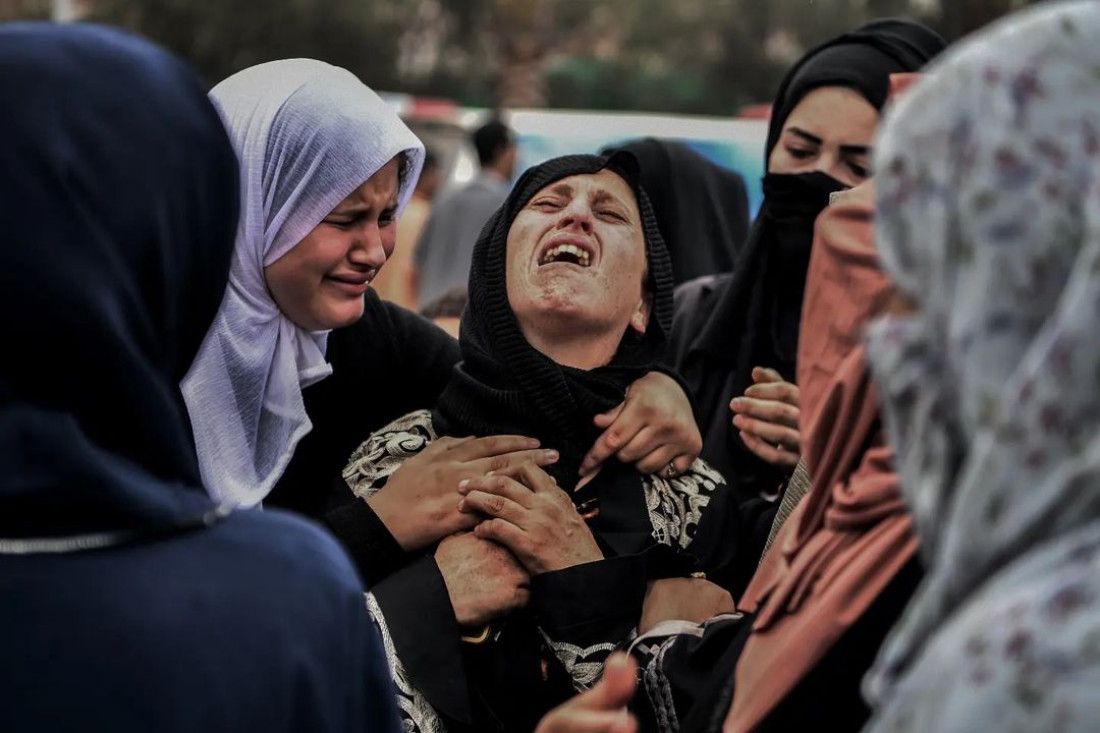
These women standing, rooted amid the rubble
These videos of grey auroras, where the torches of the rescuers illuminate bodies, heads or limbs under the rubble? And the cries of hope: "Aycha! Wallah Aycha! Fiha nafass! Fiha nafass!' 'She's alive, I swear she's alive! She's breathing! There's life in her! These men running to the hospitals, carrying precious unidentified bodies, bags of anonymous flesh and organs whose owners we no longer know? 'Achlaa! Achlaa!' 'Fragments! Fragments!' they repeat, emaciated. We'll have to put them back together by the colours of their clothes. A weary mare pulls a cart laden with tangled bodies, limbs swaying to the animal’s rhythm—nearly a dozen, if you count the heads. Most are alive, their survival hinging on the nearest hospital’s resources.
These apocalyptic images of mass exodus—grey waves of people streaming over rubble in animalistic poses, captured from above. Is this the face of programmed dehumanisation? Yet dehumanisation feels like a hollow term when juxtaposed with other images of standing women, their feet and roots anchored firmly in the rubble amid the blasts and shrapnel of bombs. Women who refuse to raise white flags or abandon their homes during the harshest sieges, tank assaults, and food blockades. Dsiplaced women who transform makeshift tents into spaces for living, schooling, therapy, play, singing, dancing, joy, love, resilience, and even childbirth... All as acts of resistance.
We hear these resilient women, determined to stay on their land, who have buried children and husbands but have thwarted 'the generals' plan' in ways no army ever could. While no one knows the fate of Gaza’s ceasefire, the fire and blood of the fifteen months preceding it remain vivid in memory. The global flood of images has left an indelible imprint of suffering. Beyond tribunal records, this imprint forges a raw, universal connection—a sudden, painful awakening of shared humanity.
